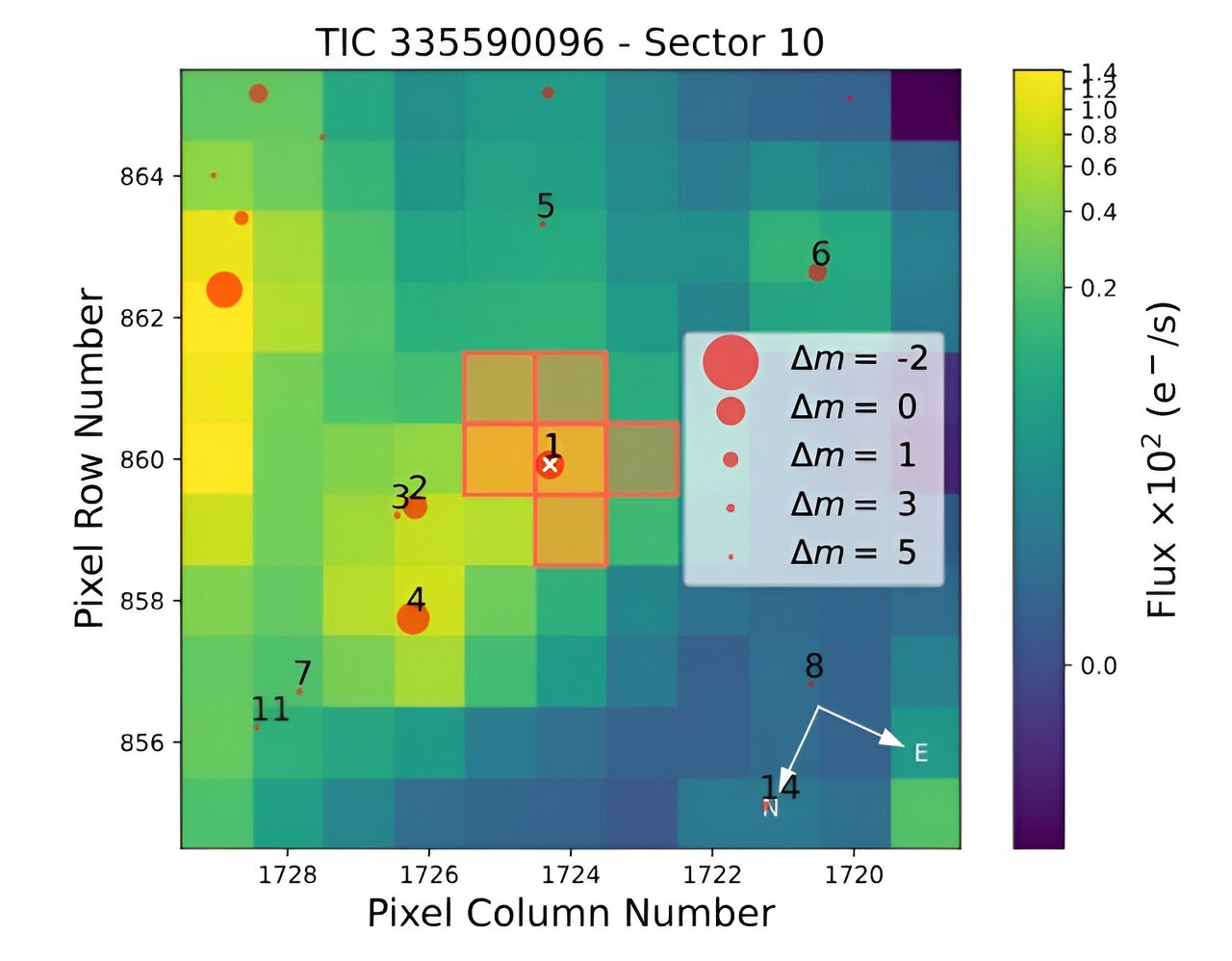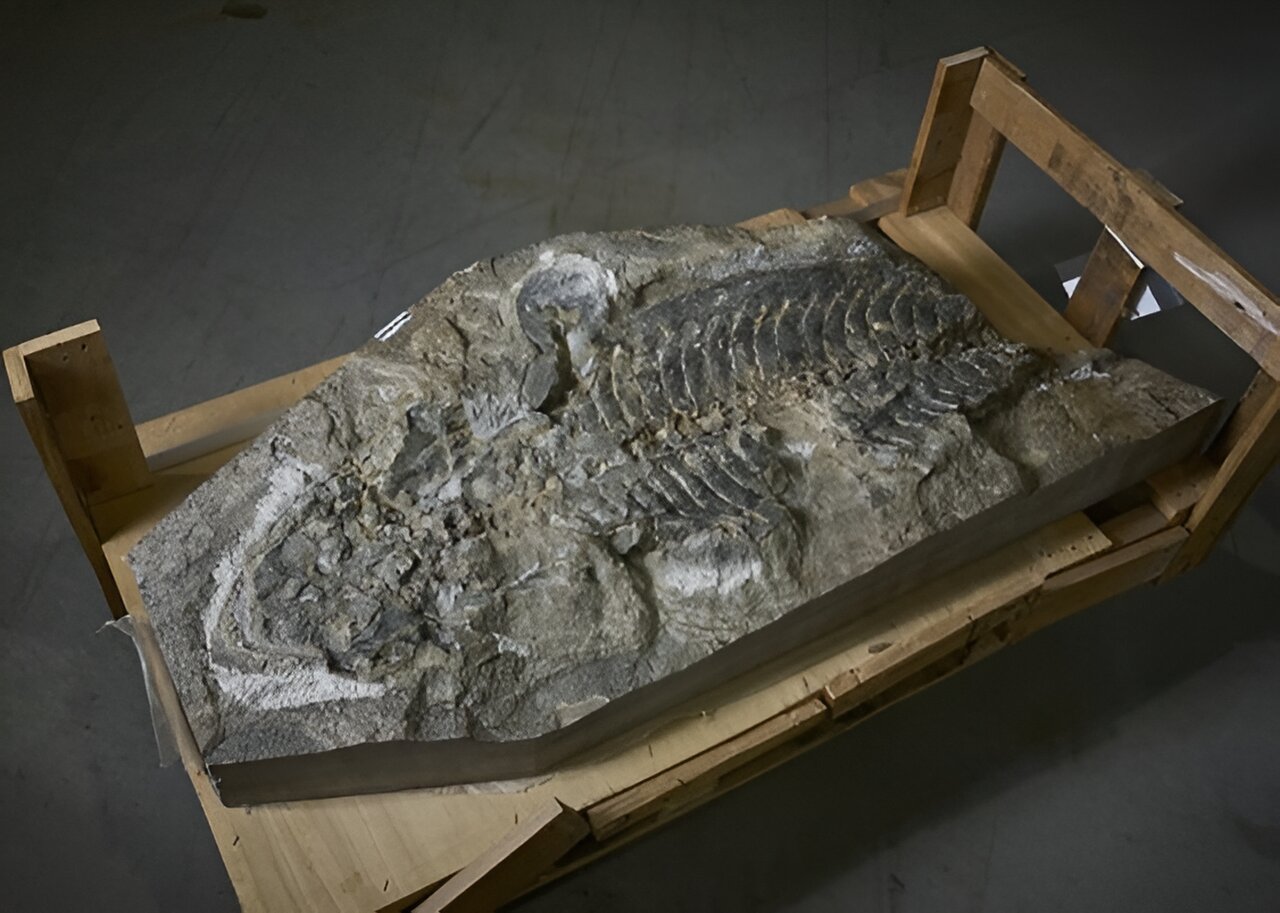Prepare to be amazed! Using NASA’s Transiting Exoplanet Survey Satellite (TESS), a team of brilliant astronomers has made an incredible discovery. They’ve found a new giant exoplanet orbiting a nearby M-dwarf star. This extraordinary alien world, known as TOI-4860 b, is about the same size and mass as Saturn. The groundbreaking findings were recently published on the pre-print server arXiv.
TESS is on a mission to survey approximately 200,000 of the brightest stars near the sun. Its goal? To search for transiting exoplanets. So far, TESS has identified over 6,700 potential exoplanets, known as TESS Objects of Interest (TOI). Out of these, 373 have been confirmed.
Now, get ready for more mind-blowing details. A team of astronomers, led by the brilliant Jose Manuel Almenara from Grenoble Alpes University in France, has confirmed the existence of another TOI observed by TESS. They detected a transit signal in the light curve of an M-dwarf star called TOI-4860. Ground-based observations further confirmed that this signal is indeed caused by a massive planet.
“We are thrilled to announce the validation and mass measurement of TOI-4860 b. Our ground-based observations confirm that the transits around TOI-4860, initially detected by TESS, are caused by a giant planet,” the researchers wrote in their groundbreaking paper.
TOI-4860 b is truly remarkable. It has a radius almost equal to 0.77 times that of Jupiter and a mass estimated to be 0.27 times that of Jupiter. This gives it a mean density of 0.75 g/cm3. The planet completes an orbit around its host star every 1.52 days, at a distance of approximately 0.018 AU. The equilibrium temperature of TOI-4860 b has been calculated to be a scorching 694° K.
Due to its close proximity to its host star, TOI-4860 b experiences intense tidal interactions. These interactions cause the planet to distort and lead to orbital decay.
The parent star, TOI-4860, is a fascinating celestial body. It belongs to the spectral type M3.5 and is about one third the size and mass of our sun. With an effective temperature of around 3,255° K and a metallicity level of 0.27, TOI-4860 is located approximately 262 light years away.
But wait, there’s more! The researchers also detected an additional signal in the radial velocity data, indicating the possible presence of another planet in the TOI-4860 system. This potential planet has an orbital period of about 427 days and a mass estimated to be at least 1.66 times that of Jupiter.
“This raises the exciting possibility that TOI-4860 b ended up in its close orbit due to planet-planet scattering or Kozai resonance with the outer planet, and then its orbit became more circularized through tidal forces,” the authors of the paper concluded.
In summary, TOI-4860 b joins the exclusive club of massive planets discovered around mid-to-late M-dwarfs. It presents a captivating opportunity for atmospheric characterization through transmission spectroscopy.








